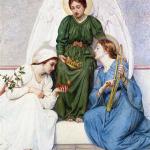Introduction: Today on the memorial of September 11, 2022 many Americans (as well as others) reflect upon a major tragedy that took the lives of many, and provoked a major paradigm shift with respect to U.S. foreign policy. The ripples of that horrible day still affect countless individuals, as well as the world as a whole. The purpose of this article is to shed some light on the “why”, to explore some of the religious rhetoric leading up to... Read more





















